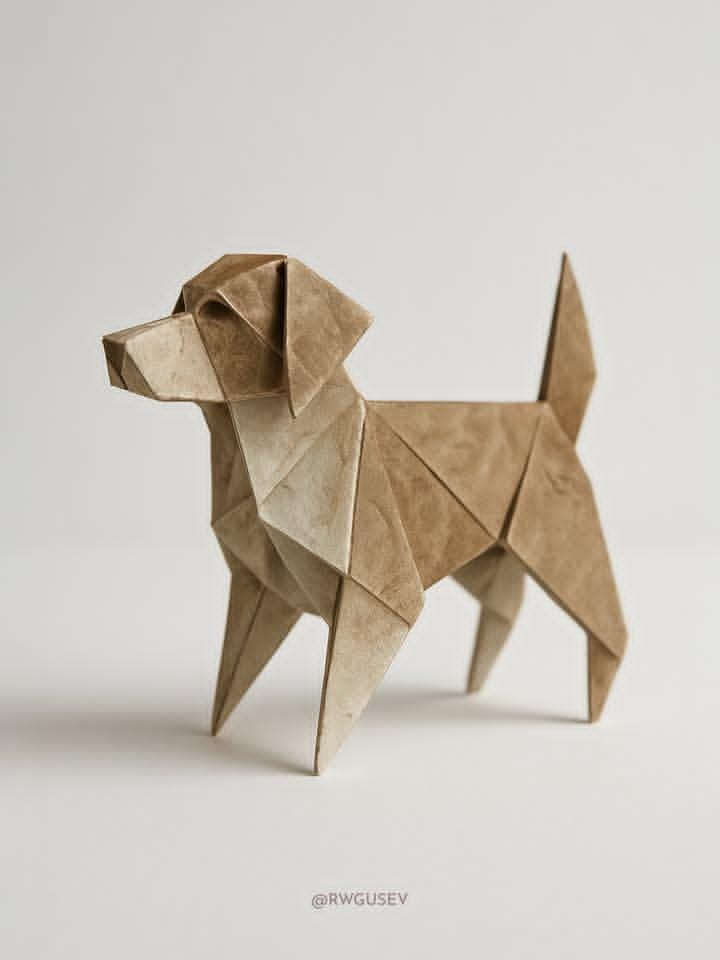
How to use this prompt
To use this prompt professionally, utilize it for origami art, minimalist designs, or paper craft promotions in education and decor. Preserve "photorealistic 3D render," "single origami [model]," "dual-toned paper," and "minimalist, pure white matte background" for lifelike details. Do not change the medium-low angle or diffused lighting. Changing model to "crane" could produce symbolic visuals, leading to creases, while boat keeps textured, hyperrealistic results.
Prompt
Generate a photorealistic 3D render of a single origami [model] crafted from dual-toned paper, hovering above a pristine white matte surface. Focus on intricate texture details: add subtle paper imperfections like crease wear, gentle crumpling, micro-scratches, and faint fingerprints to enhance realism. Capture the subject from a medium-low angle, illuminated by soft, diffused studio lighting that creates gentle gradients and highlights the paper's texture. Maintain a minimalist, pure white matte background. Use a color palette dominated by the two distinct tones of the origami paper [color_1] and [color_2] against the white, with hyperrealistic rendering style emphasizing material accuracy and lifelike details.
Why this prompt works
This prompt is effective due to its focus on photorealistic 3D rendering of origami with intricate details the dual-toned paper with imperfections like creases and fingerprints adds realism and tactile appeal the soft diffused lighting and minimalist background ensure the subject stands out making the image ideal for design showcases art prints or branding that requires elegance and precision.
Example Output
Here's an example result generated with this exact prompt:

Prompt Variations
- Model: Swap “[model]” → “a paper crane” for the classic origami subject. Swap “[model]” → “a complex origami dragon” .
- Paper Style: Swap “dual-toned paper” → “Japanese washi paper with a subtle floral pattern” for texture. Swap “dual-toned” → “metallic foil paper” for a shiny effect.
- Imperfections: Swap “crease wear, gentle crumpling, micro-scratches, and faint fingerprints” → “a small, carefully torn edge” for a different kind of imperfection.
- Angle: Swap “medium-low angle” → “a top-down angle” looking directly at the model. Swap “medium-low angle” → “an extreme close-up” on a specific intricate fold.
FAQ
What is the subject of the render?
A single origami [model] crafted from dual-toned paper.
What imperfections are added for realism?
Subtle imperfections like crease wear, gentle crumpling, micro-scratches, and faint fingerprints.